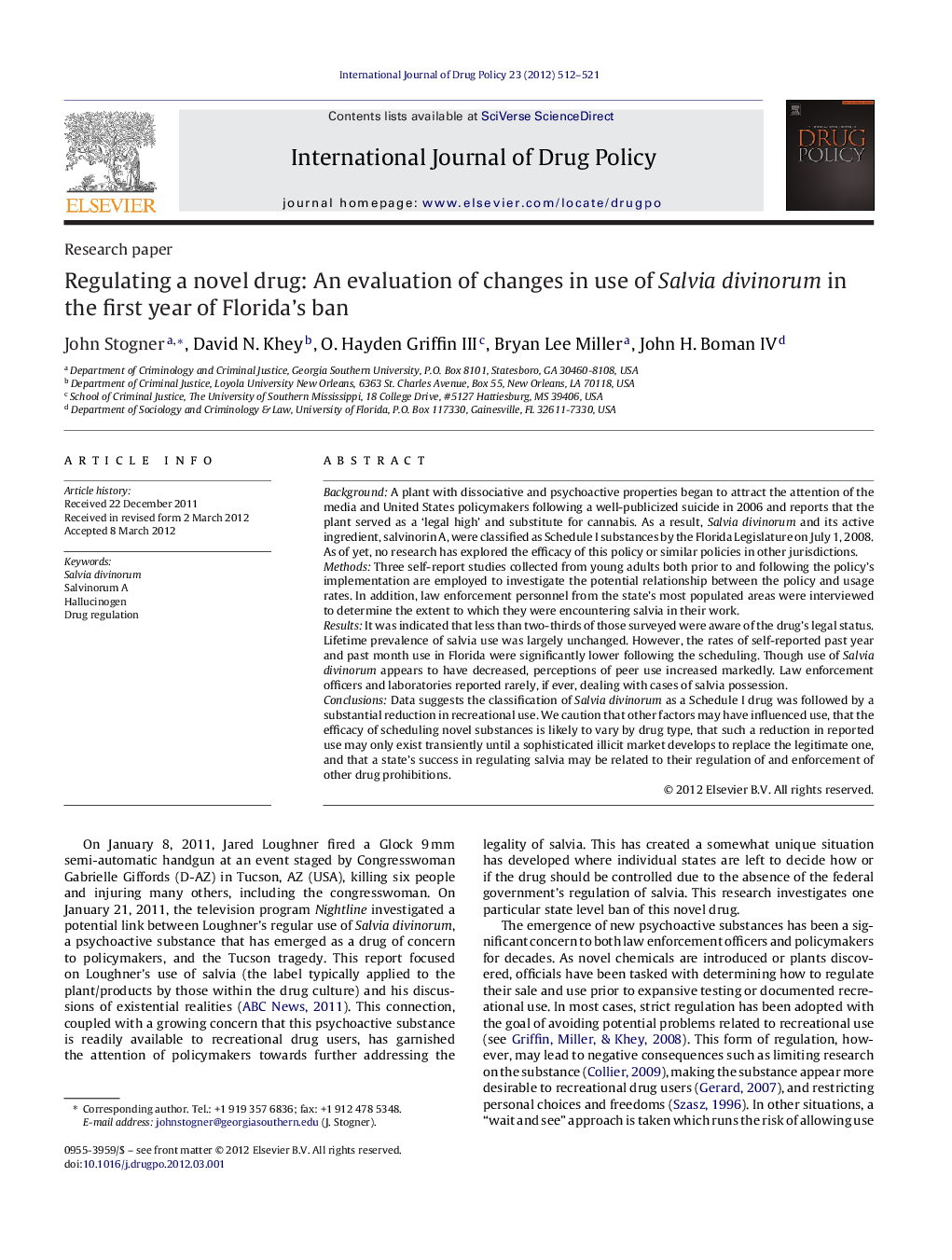| Article ID | Journal | Published Year | Pages | File Type |
|---|---|---|---|---|
| 1075175 | International Journal of Drug Policy | 2012 | 10 Pages |
BackgroundA plant with dissociative and psychoactive properties began to attract the attention of the media and United States policymakers following a well-publicized suicide in 2006 and reports that the plant served as a ‘legal high’ and substitute for cannabis. As a result, Salvia divinorum and its active ingredient, salvinorin A, were classified as Schedule I substances by the Florida Legislature on July 1, 2008. As of yet, no research has explored the efficacy of this policy or similar policies in other jurisdictions.MethodsThree self-report studies collected from young adults both prior to and following the policy's implementation are employed to investigate the potential relationship between the policy and usage rates. In addition, law enforcement personnel from the state's most populated areas were interviewed to determine the extent to which they were encountering salvia in their work.ResultsIt was indicated that less than two-thirds of those surveyed were aware of the drug's legal status. Lifetime prevalence of salvia use was largely unchanged. However, the rates of self-reported past year and past month use in Florida were significantly lower following the scheduling. Though use of Salvia divinorum appears to have decreased, perceptions of peer use increased markedly. Law enforcement officers and laboratories reported rarely, if ever, dealing with cases of salvia possession.ConclusionsData suggests the classification of Salvia divinorum as a Schedule I drug was followed by a substantial reduction in recreational use. We caution that other factors may have influenced use, that the efficacy of scheduling novel substances is likely to vary by drug type, that such a reduction in reported use may only exist transiently until a sophisticated illicit market develops to replace the legitimate one, and that a state's success in regulating salvia may be related to their regulation of and enforcement of other drug prohibitions.
